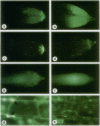Abstract
Knowledge of the mechanistic basis of differential aluminum (Al) tolerance depends, in part, on an improved ability to quantify Al located in the apoplastic and symplastic compartments of the root apex. Using root tips excised from seedlings of an Al-tolerant wheat cultivar (Triticum aestivum L. cv Yecora Rojo) grown in Al solutions for 2 d, we established an operationally defined apoplastic Al fraction determined with six sequential 30-min washes using 5 mm CaCl2 (pH 4.3). Soluble symplastic Al was eluted by freezing root tips to rupture cell membranes and performing four additional 30-min CaCl2 washes, and a residual fraction was determined via digestion of root tips with HNO3. The three fractions were then determined in Yecora Rojo and a sensitive wheat cultivar (Tyler) grown at 18, 55, or 140 μm total solution Al (AlT). When grown at equal AlT, Tyler contained more Al than Yecora Rojo in all fractions, but both total Al and fractional distribution were similar in the two cultivars grown at AlT levels effecting a 50% reduction in root growth. Residual Al was consistently 50 to 70% of the total, and its location was elucidated by staining root tips with the fluorophore morin and examining them using fluorescence and confocal laser scanning microscopy. Wall-associated Al was only observed in tips prior to any washing, and the residual fraction was manifested as distinct staining of the cytoplasm and nucleus but not of the apoplastic space. Accordingly, the residual fraction was allocated to the symplastic compartment for both cultivars, and recalculated apoplastic Al was consistently approximately 30 to 40% of the total. Distributions of Al in the two cultivars did not support a symplastic detoxification hypothesis, but the role of cytoplasmic exclusion remains unsettled.
Full text
PDF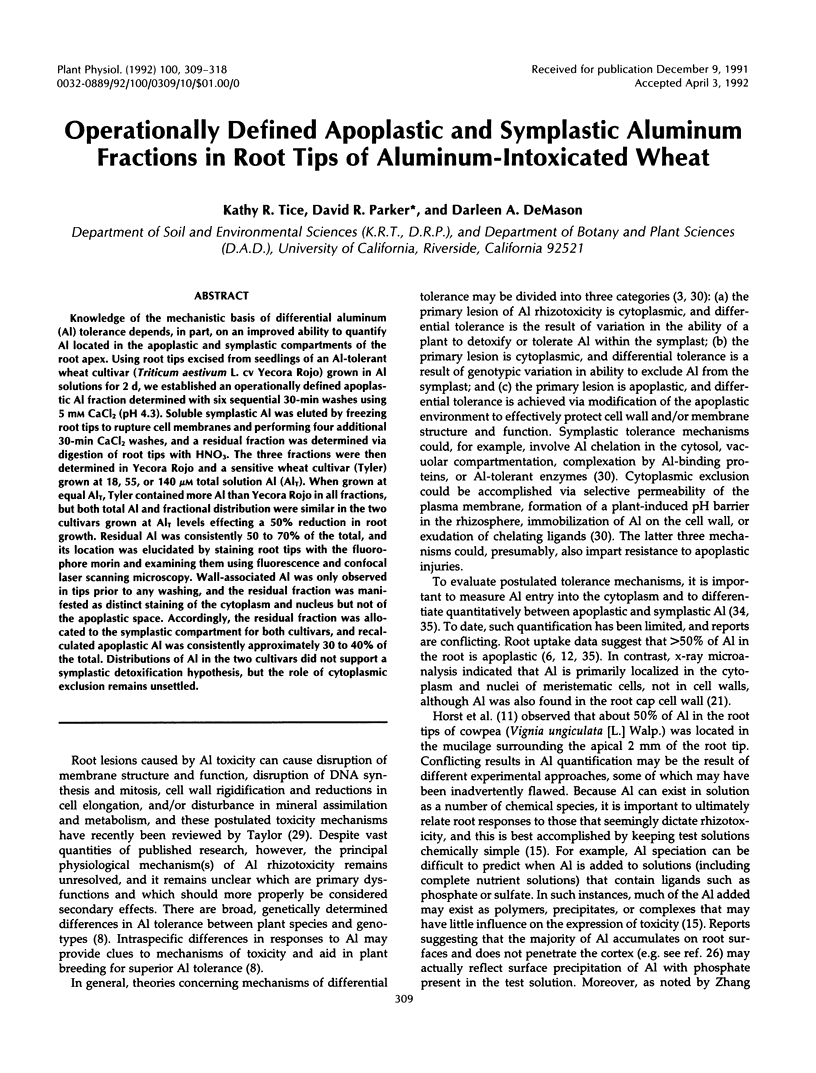
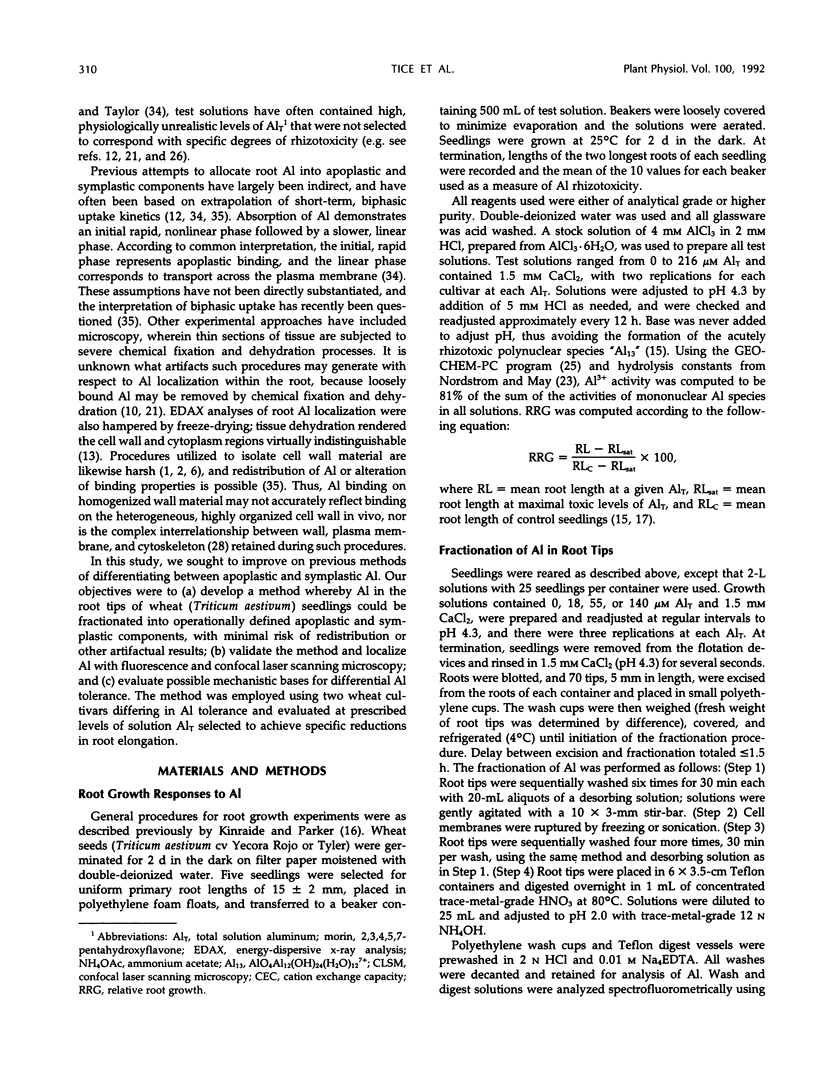
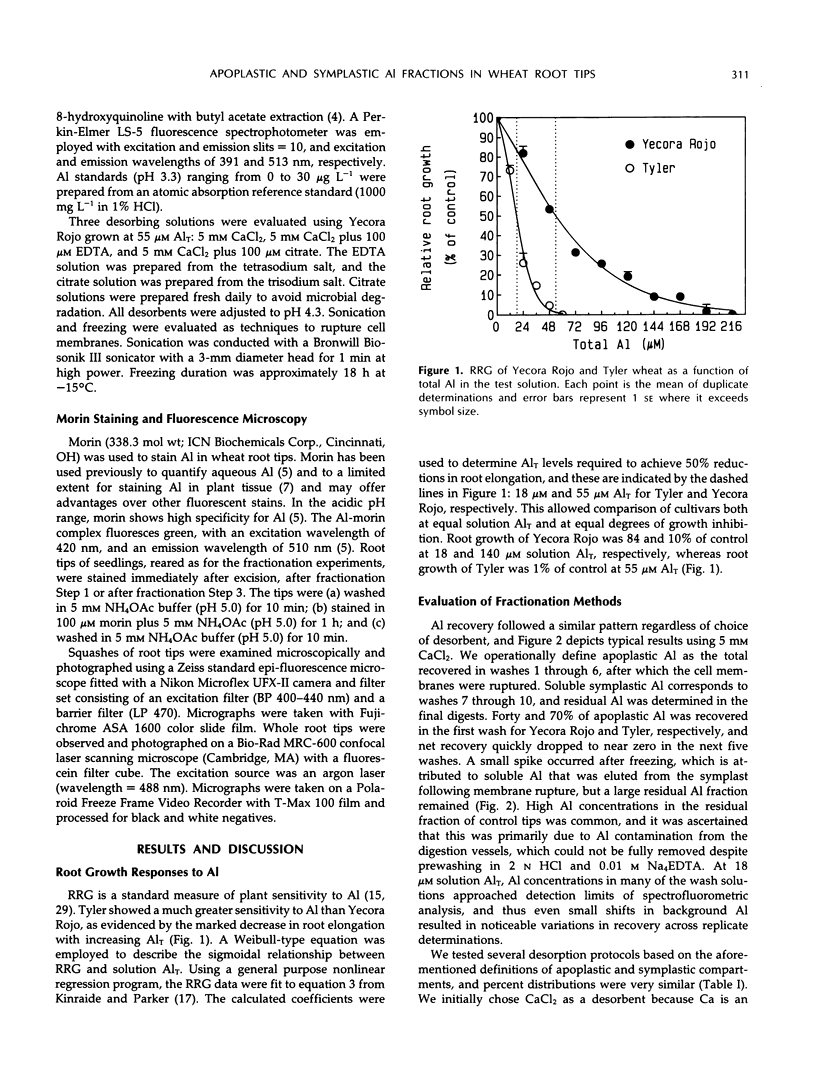
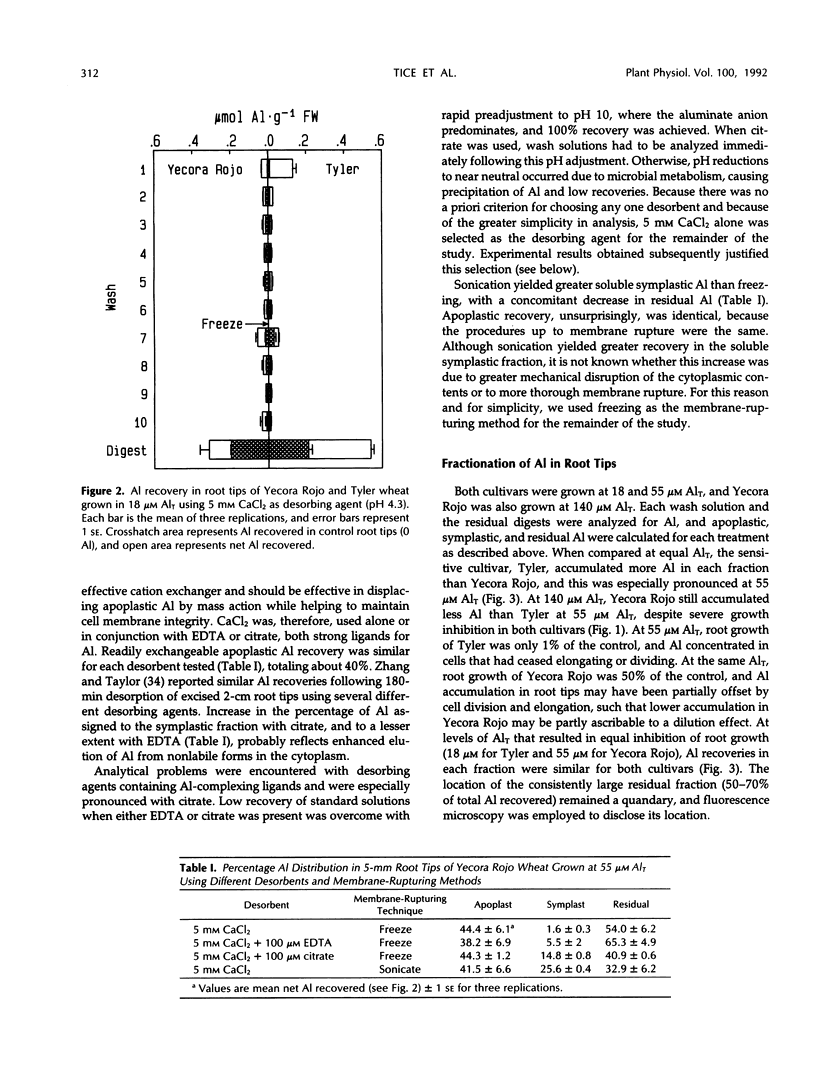
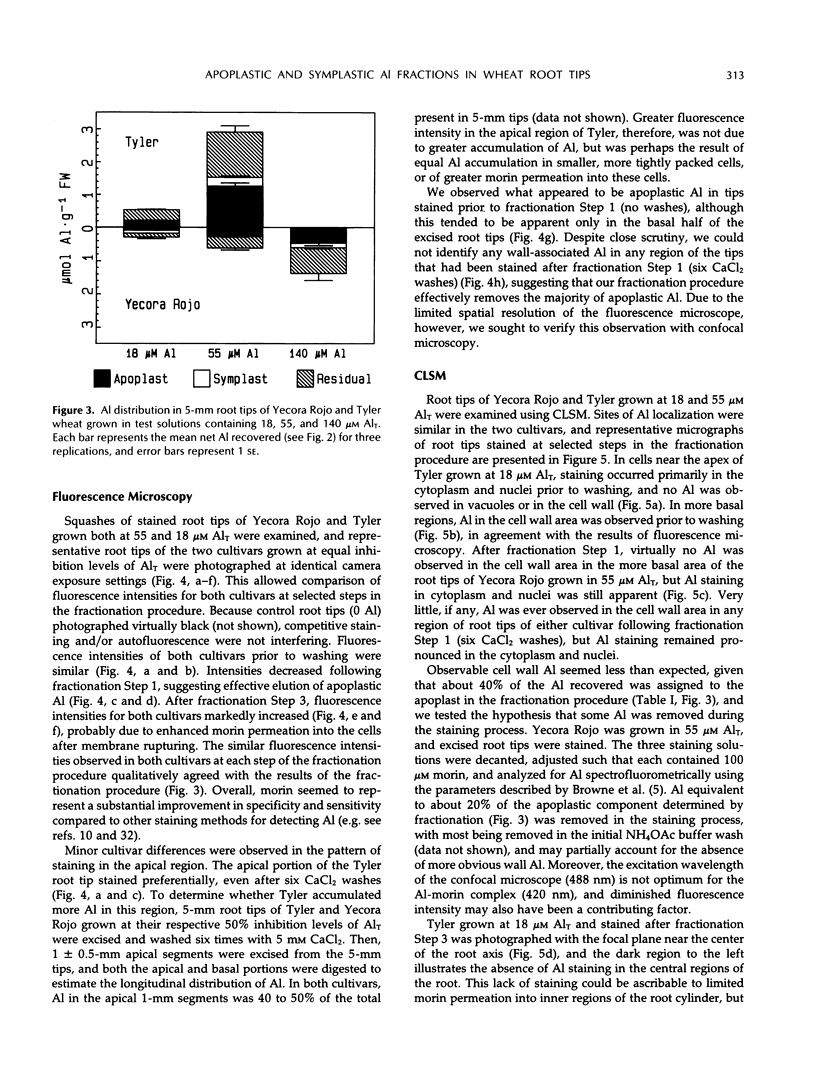
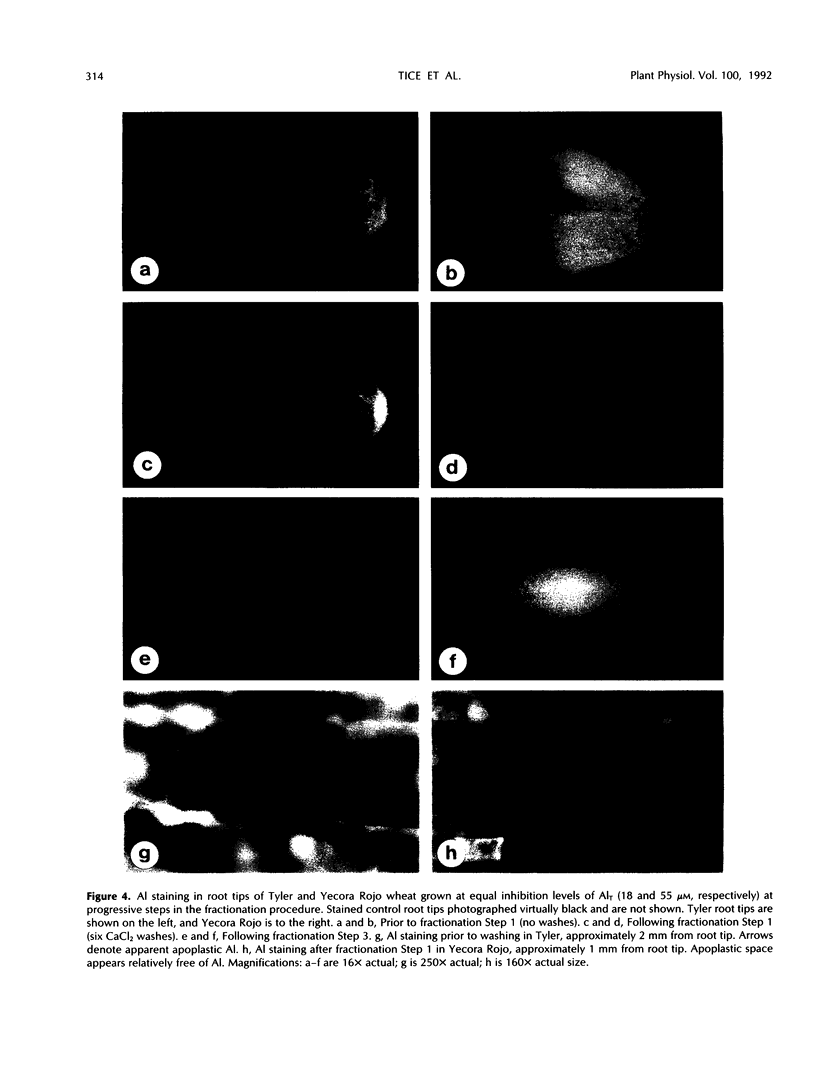
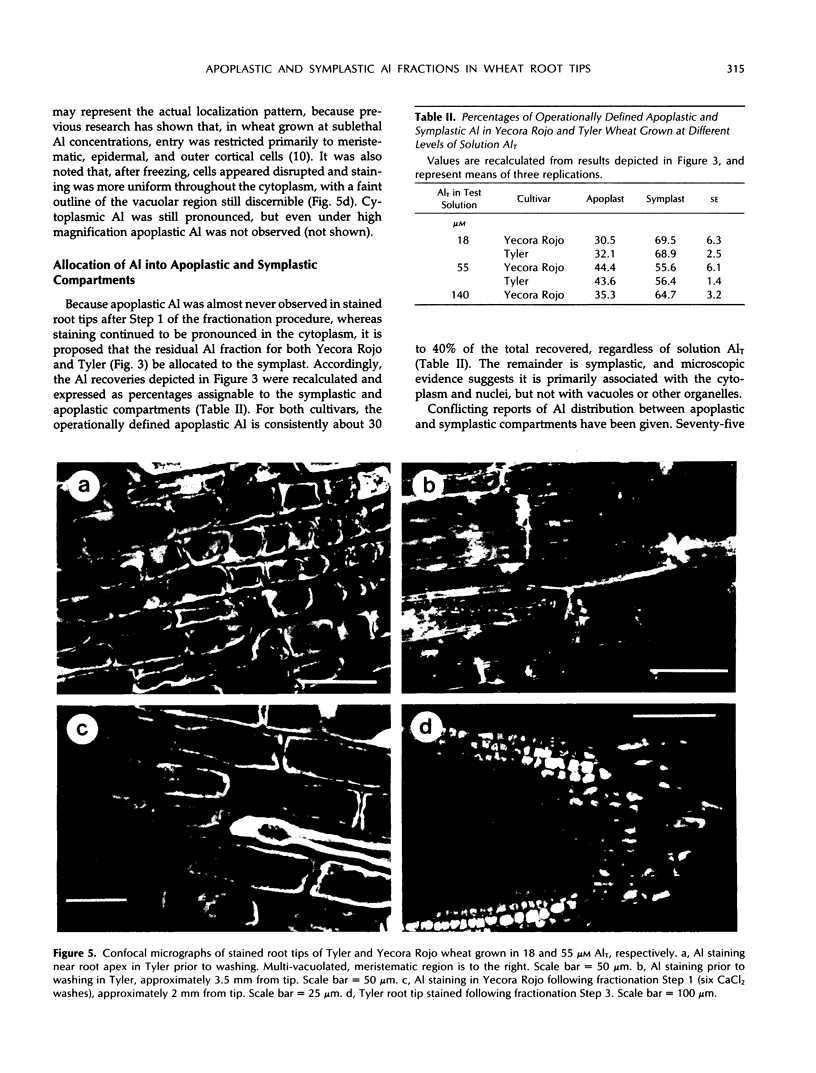
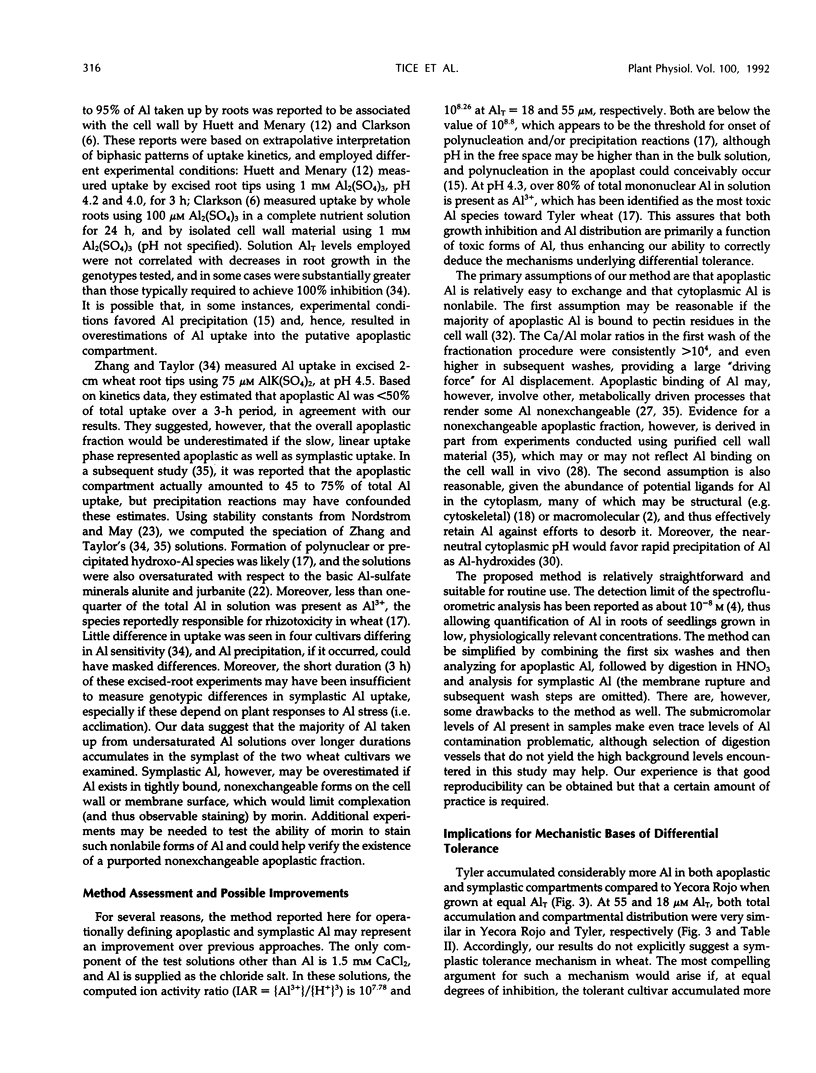
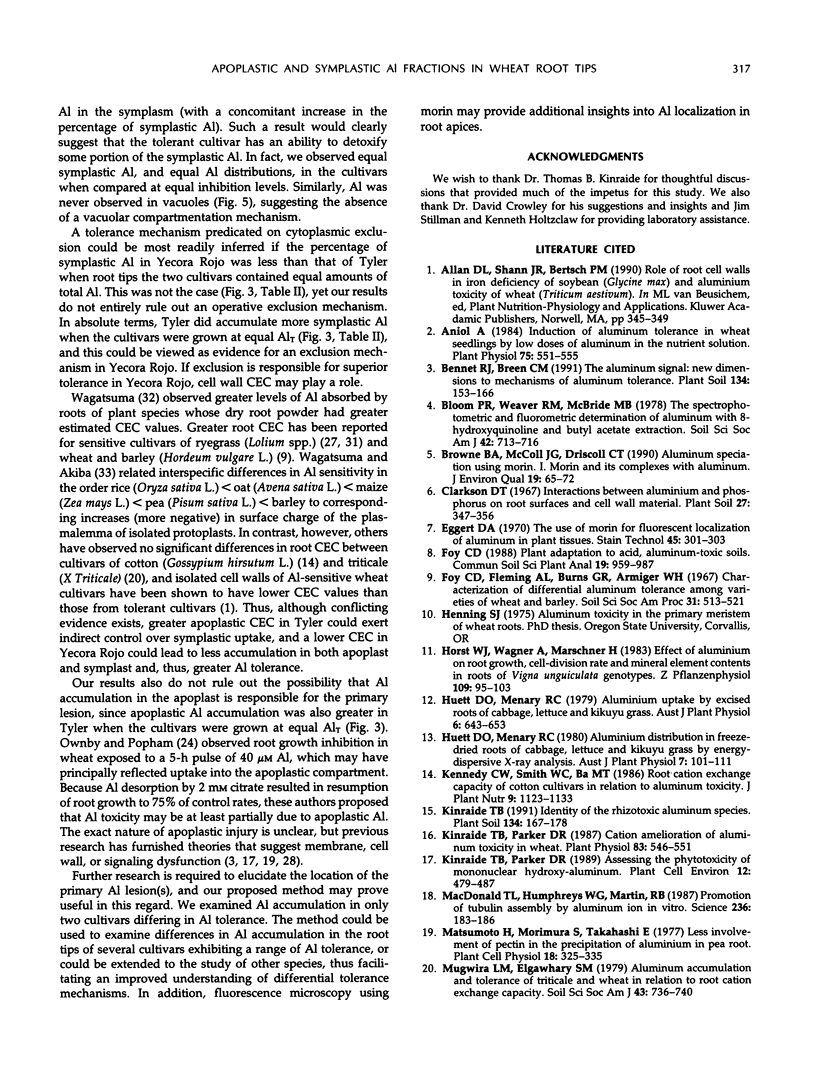
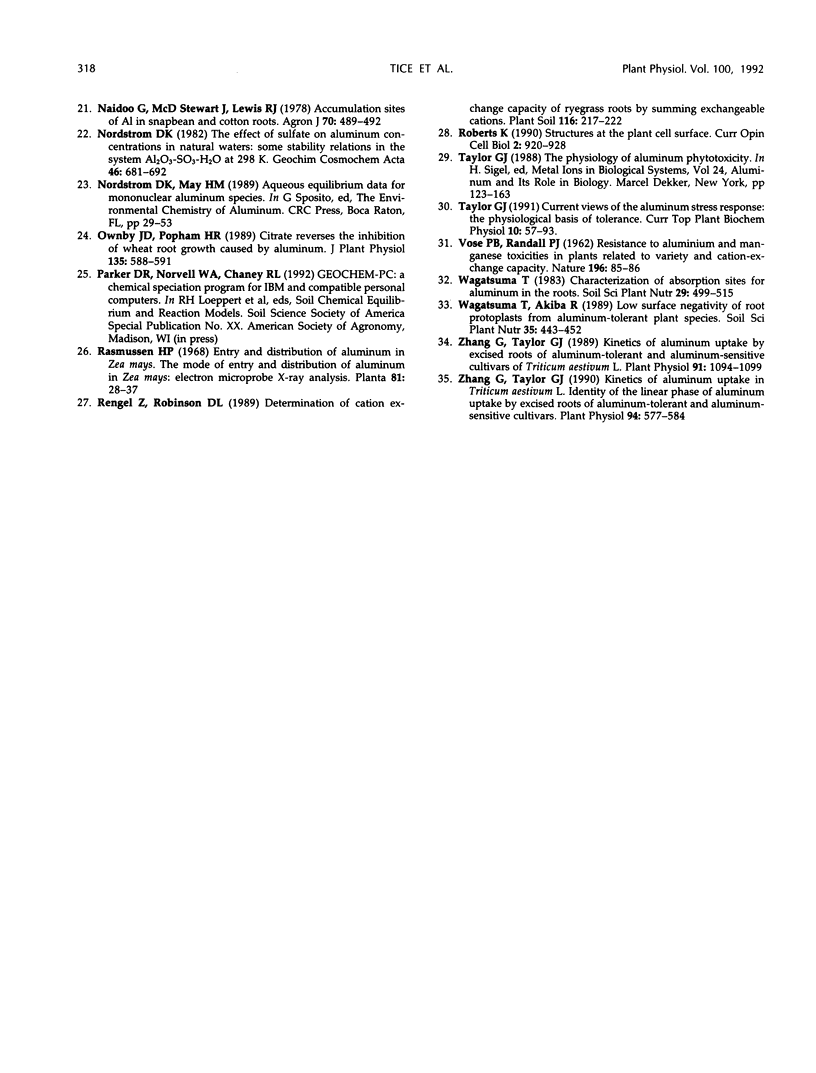
Images in this article
Selected References
These references are in PubMed. This may not be the complete list of references from this article.
- Aniol A. Induction of aluminum tolerance in wheat seedlings by low doses of aluminum in the nutrient solution. Plant Physiol. 1984 Nov;76(3):551–555. doi: 10.1104/pp.76.3.551. [DOI] [PMC free article] [PubMed] [Google Scholar]
- Eggert D. A. Th use of morin for fluorescent localization of aluminum in plantissues. Stain Technol. 1970 Nov;45(6):301–303. doi: 10.3109/10520297009067806. [DOI] [PubMed] [Google Scholar]
- Kinraide T. B., Parker D. R. Cation amelioration of aluminum toxicity in wheat. Plant Physiol. 1987 Mar;83(3):546–551. doi: 10.1104/pp.83.3.546. [DOI] [PMC free article] [PubMed] [Google Scholar]
- Macdonald T. L., Humphreys W. G., Martin R. B. Promotion of tubulin assembly by aluminum ion in vitro. Science. 1987 Apr 10;236(4798):183–186. doi: 10.1126/science.3105058. [DOI] [PubMed] [Google Scholar]
- Roberts K. Structures at the plant cell surface. Curr Opin Cell Biol. 1990 Oct;2(5):920–928. doi: 10.1016/0955-0674(90)90093-t. [DOI] [PubMed] [Google Scholar]
- Zhang G., Taylor G. J. Kinetics of Aluminum Uptake by Excised Roots of Aluminum-Tolerant and Aluminum-Sensitive Cultivars of Triticum aestivum L. Plant Physiol. 1989 Nov;91(3):1094–1099. doi: 10.1104/pp.91.3.1094. [DOI] [PMC free article] [PubMed] [Google Scholar]
- Zhang G., Taylor G. J. Kinetics of Aluminum Uptake in Triticum aestivum L: Identity of the Linear Phase of Aluminum Uptake by Excised Roots of Aluminum-Tolerant and Aluminum-Sensitive Cultivars. Plant Physiol. 1990 Oct;94(2):577–584. doi: 10.1104/pp.94.2.577. [DOI] [PMC free article] [PubMed] [Google Scholar]



